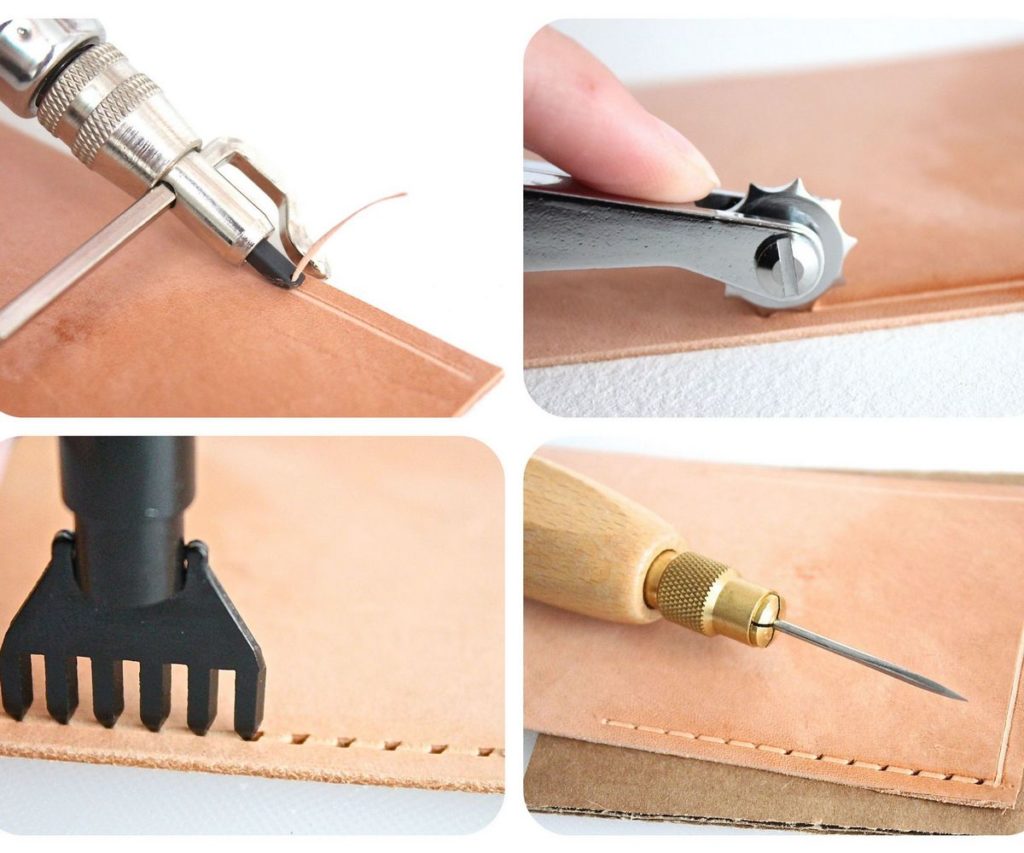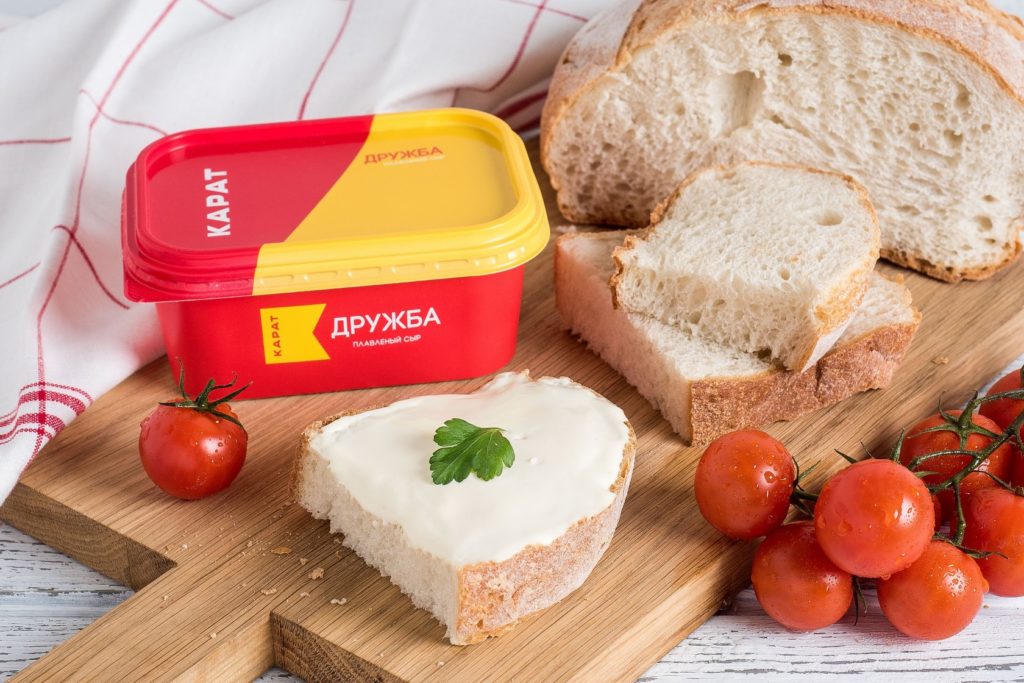Rating of the best hole punches, punches and cutters for leather and fabric for 2025

Punches, perforators and cutters are structurally different tools in the leather business, but they have a common purpose - making holes in materials. They are also able to perform many types of work related to the preparation of various dense materials and leather for stitching. These materials, as a rule, have high rigidity, which makes it extremely difficult to work with them without the instruments in question. Moreover, some manipulations without them are even impossible to perform at all. Punch-hole punchers can be used not only for fabric and leather, but also for tarpaulin and leatherette. The holes they make are even and of high quality than when carrying out similar operations with a sewing needle, drill or awl.

Content [Hide]
Classification and device
Due to the fact that the skin has a high density, a needle or an awl is not always suitable for piercing it. From this it is clear that for greater efficiency, a special tool (punches and hole punchers) should be used, the models of which can be divided into:
- lowercase;
- curly;
- Revolving;
- Ring;
- End.
The standard punch is a tube with a sharply honed working surface. Sharp sharpening is the main design requirement, based on the fact that the smaller the area of \u200b\u200bthe device is in contact with the material, the easier it is to make holes in it.
IMPORTANT! It is quite possible to make a hole-punch and punch device on your own, you just need to pick up a tube of the desired diameter and sharpen it with high quality.
There are also modern models that have the function of reaming. For such samples, the work cycle consists of two steps:
- The tip punches a hole;
- Special built-in blades expand the opening to a given size.
The reaming process itself is a mechanical processing of the material, in which the accuracy of the punched hole is calculated in tenths of a millimeter. Performing such manipulations manually is almost impossible, because. it will be necessary to apply excessive muscular efforts to the device, observing increased accuracy. In the countersink, as a working drive, various machine tools for metalworking can be used. The shape of the hole will depend on the working part of the hole puncher. As an example, we can give the conical shape of the tool, from the impact of which round holes will be obtained.
Models for eyelets
To install eyelets (fittings that protect holes from destruction) on the material, you will need to make round holes with a certain diameter. It is very difficult to perform such an operation with the help of an improvised tool or at home. Therefore, for this process, special devices are used, which, while making holes, simultaneously fix special rims on their edges that protect the edges of the holes from destruction. Usually, such rivets can also contain the company logo of the manufacturer or its corporate pattern. Grommet models not only perforate products, but at the same time can bend the edges of the holes, which in the future will not require special processing of their edges.
Inline Models
Their shape can be compared with a comb or a table fork. They have special spikes that are arranged in a single line, standing at an equidistant distance from each other.On this device there are needles in the amount of two to six pieces. They are installed on the same line, along which the future seam will pass. By striking the end part of the device, the material being processed is pierced and holes are made in it. The sewing speed will depend on the number of spikes on the stitch hole punch. Upon completion of the penetration, the spikes are removed from the holes, and the comb itself is shifted to the desired distance to one of the sides, observing the evenness of the step. Line punchers can be divided into two options:
- Products that work on the principle of a cutter that presses / pierces holes and pushes the material apart;
- Products that cut a small cavity in the material, with the resulting excess removed (this option leaves the highest quality and most accurate holes).
It is worth noting that for lowercase models, the spikes can have a different shape. Most often there are round and semicircular options, but there are also:
- diamond-shaped;
- triangular;
- oblique;
- Rectangular.
IMPORTANT! An important role in the work of urgent samples is played by the thickness of the section of the spikes and the distance between them. For example, French stitching is usually done with oblique punches, and these are traditionally used for sewing purses or processing leather watchbands.
If it is supposed to work with very rough and dense material, then it is preferable to use cutters, in which the spikes have a larger diameter and an increased spacing. This ratio will allow you to flash the future product with thicker threads.It should be noted that for this category there is no universal toolkit suitable for all working situations, therefore, the more different line combs the master has, the greater the range of tasks he can perform.
IMPORTANT! The rhomboid shape of the spikes is characteristic of the Chinese tailoring school, which has developed historically. Their line punchers are classically 1, 2, 4, 6 teeth with a standard distance of 5 millimeters between them.
Revolver models
In their appearance, the devices in question resemble pincers, on one part of which a revolver-type device is installed for punching holes. Using such a sample, it is necessary to turn the device and install the working spike of the desired type. Next, it remains to put the material for processing and press the handle to make a hole. As a standard, six spikes with a diameter of 2 to 4.5 millimeters are installed in revolving models. The risk of scrolling the drum during operation is prevented by a special blocker. However, one press of this model means the execution of one hole, which indicates that it is not possible to get a seam right away. The main purpose of revolving devices is to punch single holes, for example, for a waist belt or a strap for a bag.
Curly models
Punching holes by means of ring or figured devices involves the removal of part of the material that falls under their working part. With the help of such devices, it is possible to perform large-sized slots. Their traditional shape is a regular tube with a pointed end. Cutting is accomplished by applying the pointed part to the material and hitting hard against the end of the tool. The range in this model range is very large.Thanks to them, it is possible to make not only an oval or round hole, but also repeat the outlines of complex geometric shapes - stars, polygons, trapeziums, etc. The models in question are usually supplied in kits, where the tubes have a diameter of 2 to 22 millimeters.
End models
They are most often used for cutting skin. Special trimmers used for processing belts, which are shaped like a bent steel plate, have gained great popularity. It is convenient to cut tapes for waist belts with such a plate.
"Hunting" models
With their help, wads are specially cut, which are subsequently inserted into the cartridge. They have large-sized forms, in comparison with tailoring variations. Their diameter corresponds to the caliber of the cartridge loaded with the wad. Their main purpose is to cut the desired piece from a very dense material, which is standard cork, cardboard or felt.
Special Models
These variations are equipment that can work both on leather and dense fabric, and on metal. These may include:
- Pneumatic - such samples require connection to a pneumatic compressor. They are used for processing different materials up to tin, sheet metal or metal tiles.
- Hydraulic - they, to a greater extent, are similar in principle of operation and appearance to industrial machines designed to make holes in metal.
- Manual - these variations for dense materials will require remarkable strength from the master. Their body itself is always made of durable carbon steel, due to the specifics of processing dense products. Due to their massive design, they are less prone to deformation when plunging into the workpiece.
IMPORTANT! Special models can lose their sharpness very quickly, so a periodical sharpening procedure is provided for them. At the same time, it is necessary to sharpen the working part not only on the outside, but also on the inside, completing this process with polishing.
Basics of using hole punches and punches
First of all, you should choose the right tool. Its pitch, the diameter of the punching working part and the material of manufacture must correspond to the current task. Then you need:
- On the existing workpiece, mark the location of the future hole;
- Install the tool in such a way that its working part fits snugly into the future hole, while not going beyond the required framework;
- It is important to observe the location of the interval between the holes on the basis of uniformity, and all marks should be located on the same line;
- Having accurately checked all the measurements, the tool is applied to the workpiece and its activating element is pressed (for end-ends - a blow to the end, for revolvers - grips are squeezed, etc.). The pressing force must correspond to the density of the material;
- After pressing, it is necessary to remove the cut out element of the workpiece or clean the resulting hole.
When using the equipment in question, the selection of the interval and the centering of the tool are considered important conditions. If these conditions are in "disagreement" with each other, then the holes may not be on the same line. When punching the first hole (or set of holes), the interval and direction must be constantly maintained, then the resulting result will be indistinguishable from the factory work. The above processing principles are applicable not only for punching holes, but also for installing buttons and rivets.
IMPORTANT! The tool will last much longer if you put a special substrate in the form of a polymer plate under the workpiece. The extraction of the workpiece at the end of the work must be carried out vertically, avoiding its swinging.
Self-made stepper punch
The stepping tool is rightfully considered one of the main devices for working with leather, which is used to make holes when sewing blanks. As a constructive base for it, it is possible to use an ordinary table fork. The latter is preferable to choose from stainless steel (only not aluminum), which has a flat handle. Its teeth, preferably, should be rectangular or triangular.
First you need to get rid of the convexity of the teeth by aligning them. To do this, it is necessary to heat the working part over the fire, after holding the fork handle in a vice, and knock on the teeth with a hammer. Further, the teeth are carefully filed with a hacksaw, and then broken off with pliers. Also, the excess part of the handle is sawn off with a hacksaw, in order to give it an even shape of the butt for impact, and the sharp edge formed along the edges is cleaned with a file. The next step will be the process of equalizing the width of the fork tines, because the outer tines of the fork are slightly wider than the middle ones.
At the last stage, it is necessary to sharpen the working elements of the device with a needle file, making sure that the length of the teeth is uniform, otherwise the size and shape of the punched holes will differ.
Before using the resulting device, it is necessary to check the quality of future holes on unnecessary scraps of leather blanks. If an adjustment is needed, then it must be carried out by sharpening the working cloves.
It is worth noting that for the handle it is possible to use a part of another tool that has fallen into disrepair with a suitable size in order to ensure complete convenience of striking the end part, with proper distribution and application of the impact force over all the teeth.
Difficulties of choice
When working with leather, most novice craftsmen ask themselves the question: which punching equipment should be preferred? The choice of high-quality tools will allow you to quickly and efficiently mark the workpiece, punch and punch holes, while simultaneously selecting their proper shapes and sizes. Therefore, when choosing, you need to follow a few simple rules:
- The oval model is great for most leather jobs, from multiple holes in a waist belt to single bag options;
- Curly models are a design tool, because with their help complex geometry is performed: crescents, flowers, drops and even butterflies;
- Line models are suitable for making many options for a set for hole lacing.
Most professionals prefer to use round punches with 4-5 mm pitch more often, and in special cases, use a not too expensive diamond-shaped set. When buying, you need to pay attention to the quality of the teeth - whether they are polished or not. Work with a punch whose teeth are polished will be somewhat faster, since it will be easier for him to stick into the workpiece than for unpolished teeth, which will cling to the edges of the holes. Polished samples are much more expensive than unpolished counterparts. However, if one-time work is supposed, then it is possible to get by with an unpolished tool.
It is worth noting that devices made in Japan, Germany and the USA are more popular. Chinese devices, although they are very cheap, often do not even have the minimum necessary qualities. The best manufacturing material for the tools in question is durable alloy steel. As for sharpening the working teeth, it would be better if they are diamond-cut or additionally hardened.
Rating of the best hole punches, punches and cutters for leather and fabric for 2025
Budget segment
3rd place: "PHM-06 - Micron, dark gray"
votes 0
This sample is an inexpensive and reliable solution, especially suitable for a beginner leather crafter. It is made of durable metal and its main purpose is domestic use. The design provides a handle with a non-slip coating, and the diameter of the tool is 8 millimeters. Perfect for working with dense fabric, leather, suede and leatherette. The recommended cost for retail chains is 290 rubles.

- An excellent variation for a novice master;
- Enough capacity to process various materials;
- Non-slip coating.
- Not suitable for fine fabrics.
2nd place: "Do it!" for leather semicircular 50mm"
votes 0
An excellent model for punching and trimming leather products and various leather strips with a width of up to 50 millimeters. The cutting part, made in the form of a semicircle, is firmly welded to the handle, which makes it easier to work with a percussion instrument. The impact force is properly distributed over the entire cutting edge. Differs in ease of use.The recommended cost for retail chains is 350 rubles.

- Ease of use;
- Uniform distribution of impact force along the cutting edge;
- Durable manufacturing material.
- Not detected.
1st place: "Slitter for leather and cardboard "Russia-18360S"
votes 0
This hole punch is used for making holes with diameters of 2.5-3.0-3.5-4.0-4.5-5.0 millimeters. Perfectly suited for working with materials such as leather and cardboard, plastic and textiles, as well as other soft substrates. The device is characterized by a well-adjusted pitch between the teeth, and its handles are equipped with a special anti-slip coating. The established cost for store chains is 475 rubles.

- Ease of use;
- Wide range of uses;
- Anti-slip handles.
- The stronger the workpiece, the more muscle effort is required.
Middle price segment
3rd place: "Leather Punching Tools - 10PCS "BLGT"
votes 0
This set of punches belongs to the semi-professional category, it contains the most popular sizes for making holes. Comes with a handy storage case. All elements are made of durable alloy steel. The end impact part evenly distributes the applied force to all edges, after which it remains only to remove the cut circle. The sizes of punches vary from 0.5 to 5 millimeters. The recommended cost for store chains is 875 rubles.

- Large and high quality set;
- Durable workmanship steel;
- Convenient storage case.
- Not detected.
2nd place: "PHM-01 - Micron"
votes 0
An excellent semi-professional hand tool. To work with it, no extraneous tools (such as a tailor's hammer or mallet) are required. It can be used both at home and in professional tailoring. The nozzles included in the kit are made of durable metal, and the design itself is equipped with a comfortable working handle. The diameter of the nozzles varies from 1.5 to 4 millimeters. The main purpose of the device is the processing of dense fabric, suede and leather, as well as leatherette. The established cost for retail chains is 1,700 rubles.

- Set of nozzles included;
- Convenient working handle;
- No need for third party tools.
- Too high price.
1st place: "Buffalo - 7 mm"
votes 0
This device is highly specialized and is designed for punching holes in leather watch straps. The pitch between the holes is 7 millimeters, and the cut-off hole diameter is 2 millimeters. The number of teeth on the comb is four. The teeth of the fixture are interchangeable, but they will have to be purchased separately. The punch hole represents the shape of a regular circle. The teeth are factory sharpened and are immediately ready for use. Production material - stainless steel. The country of origin is Russia under a US license. The established cost for store chains is 2400 rubles.

- Rugged construction;
- Possibility of replacement of tips;
- Quality manufacturing.
- High price.
Premium class
3rd place: "Set of figured punches "BLGT"
votes 0
This kit is a great find for a professional tailor designer. Includes 52 parts of various complex geometric shapes, which are made of alloy steel. Their cutting edges are properly sharpened and able to cut through even the thickest leather. The established cost for retail chains is 2450 rubles.

- Adequate price for such a large number of nozzles;
- Durable manufacturing material;
- Excellent sharpening of cutting edges.
- Not detected
2nd place: "Buffalo - 5 m"
votes 0
This kit has a universal purpose and can be used both separately and as a nozzle for Ter-2 or Pressmark presses. The set includes a 6-prong punch, a 2-prong punch, and a padded nozzle made of polypropylene for easy punching. The stitching step of the device leaves 5 millimeters, and the diameter of the cut-out hole is 1 millimeter. The teeth can be replaced, the material of manufacture of the device is stainless steel. The established cost for retail chains is 3,400 rubles.

- Versatility of use;
- Nozzle variability;
- Replaceable teeth;
- Quality metal workmanship.
- High price.
1st place: "ZTools - 2 - 5"
votes 0
This device belongs to professional tailoring devices for the leather industry. The structure is made of high quality alloy steel. The kit includes two nozzles for five and two teeth, respectively. It is possible to use nozzles both separately and simultaneously (when installed in an appropriate press). The punches themselves can be changed by varying their diameter.The established cost for retail chains is 3,800 rubles.

- Versatility;
- Production material - alloyed steel;
- Ability to work with the press.
- Overcharge.
Instead of an epilogue
A review of the modern market of the devices under consideration has established that, in almost all segments, it presents products from a foreign manufacturer. At the same time, it is quite capable of meeting the declared prices in terms of its quality, although the prices may seem quite high. It is recommended to purchase such tools through online stores, because it is possible to find a sufficient assortment in them that can satisfy both a professional craftsman and an amateur. As for the brands of the producing countries, I would like to note the German companies that have all the good characteristics of the goods supplied, and, unlike others, they try to fill the market not with individual tools, but rather extended sets at once. The Russian manufacturer is not even represented by its own products, however, it manufactures goods with decent quality under the license of the American company Buffalo.
new entries
Categories
Useful
Popular Articles
-

Top ranking of the best and cheapest scooters up to 50cc in 2025
Views: 131660 -

Rating of the best soundproofing materials for an apartment in 2025
Views: 127698 -

Rating of cheap analogues of expensive medicines for flu and colds for 2025
Views: 124526 -

The best men's sneakers in 2025
Views: 124042 -

The Best Complex Vitamins in 2025
Views: 121946 -

Top ranking of the best smartwatches 2025 - price-quality ratio
Views: 114985 -

The best paint for gray hair - top rating 2025
Views: 113401 -

Ranking of the best wood paints for interior work in 2025
Views: 110327 -

Rating of the best spinning reels in 2025
Views: 105335 -

Ranking of the best sex dolls for men for 2025
Views: 104374 -

Ranking of the best action cameras from China in 2025
Views: 102222 -

The most effective calcium preparations for adults and children in 2025
Views: 102016









